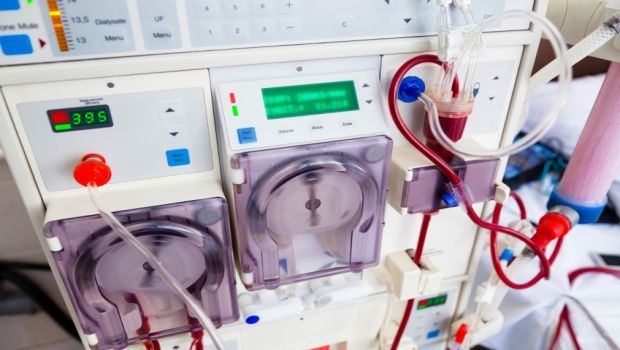Antimicrobial Stewardship Programs in Dialysis Clinics Reduce Infections, Costs

A new analysis indicates that implementing antimicrobial stewardship programs in out-patient dialysis facilities can lead to significant and meaningful reductions in infections caused by multidrug-resistant organisms, infection-related deaths, and costs. The findings appear in an upcoming issue of the Clinical Journal of the American Society of Nephrology (CJASN).
Infections due to antimicrobial-resistant bacteria continue to rise and are associated with considerable morbidity and mortality. Much of the problem results from antibiotic exposure, which can cause the emergence and dissemination of resistant bacteria. Because up to 30 percent of antimicrobials (which include antibiotics) administered in out-patient dialysis facilities are not indicated or are not optimal based on national guidelines, antimicrobial stewardship programs are needed in these facilities. Such programs seek to promote the appropriate use of antimicrobials, improve patient outcomes, and reduce microbial resistance.
Erika D’Agata, MD, MPH, of Brown University, in collaboration with Cornerstone Research Group Inc., a global health economics and outcomes research company, developed a model to examine the potential impact of such programs. Using an analytical model, the team predicted that, on a national level, implementation of antimicrobial stewardships would result in 2182 fewer infections caused by multidrug-resistant organisms and Clostridium difficile (a 4.8% reduction) per year. It would also lead to 629 fewer infection-related deaths (a 4.6 percent reduction) and a cost savings of $99,804,603 (a 4.7 percent reduction) per year.
“This paper emphasizes the importance of improving antimicrobial prescribing in dialysis facilities in improving the health of patients on maintenance hemodialysis,” said D’Agata.
Study co-authors include, Diana Tran, MSc, Josef Bautista, MD, Douglas Shemin, MD, and Daniel Grima, MSc.
Disclosures: The authors reported no financial disclosures.
The article, “Clinical and Economic Benefits of Antimicrobial Stewardship Programs in Hemodialysis Facilities,” appeared online at http://cjasn.asnjournals.org/ on August 23, 2018, doi: 10.2215/CJN.12521117.
Source: American Society of Nephrology (ASN)
Robust infectious disease surveillance, including rapid subtyping of influenza A, is essential for early detection, containment, and public health reporting of novel viral threats.